7 min read
Preparations for Next Moonwalk Simulations Underway (and Underwater) 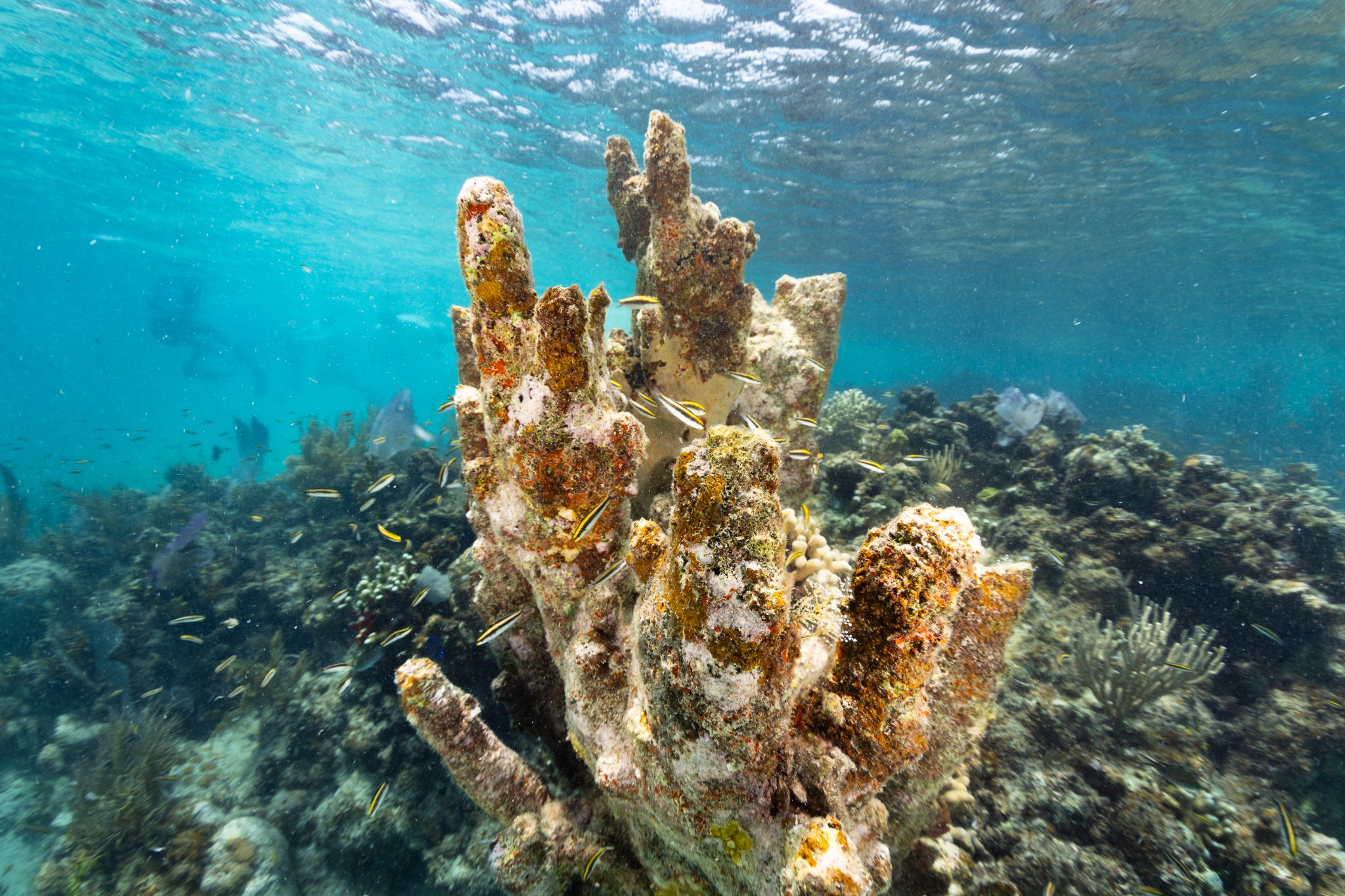 Juvenile black, white, and yellow-striped Bluehead wrasse fish dart in and out of a dead colony of pillar coral (Dendrogyra cylindrus), now covered in various algae, in the waters of Playa Melones, Puerto Rico. NASA Ames/Milan Loiacono Coral reefs cover only 1% of the ocean floor, but support an estimated 25% of all marine life in the ocean, earning them the moniker ‘rainforest of the sea.’ They also play a critical role for coastal communities; preventing coastal erosion, protecting coastlines from hurricane damage, and generating $36 billion in annual income worldwide.
Juvenile black, white, and yellow-striped Bluehead wrasse fish dart in and out of a dead colony of pillar coral (Dendrogyra cylindrus), now covered in various algae, in the waters of Playa Melones, Puerto Rico. NASA Ames/Milan Loiacono Coral reefs cover only 1% of the ocean floor, but support an estimated 25% of all marine life in the ocean, earning them the moniker ‘rainforest of the sea.’ They also play a critical role for coastal communities; preventing coastal erosion, protecting coastlines from hurricane damage, and generating $36 billion in annual income worldwide.
We asked Juan Torres-Pérez, a research scientist and coral reef expert at NASA Ames Research Center, about the science behind coral reefs, and the role they play in both marine ecosystems and human communities.
What is the difference between a reef, coral, and a coral reef?
Reef
Reefs are ridge-like structures, either natural or artificial. “A reef by definition is a structure that provides some relief above the ocean floor,” Torres-Pérez said. “It could be something man-made: you can pile a bunch of car tires, and then they get colonized by different organisms. Or it could be natural: a small hill on top of the ocean floor in which the primary framework is a rock.”
Corals
Corals are animals from the phylum Cnidaria, typically found along tropical coastlines. They comprise hundreds to thousands of living organisms called polyps, each only a few millimeters in diameter. Each polyp has its own body and a mouth with stinging tentacles to capture food such as plankton and small fish. The polyps grow together until they form a colony, and it is this colony that we recognize as a coral. There are two types of coral: hard corals and soft corals. Hard corals, also known as stony corals or more formally as Scleractinians, secrete calcium carbonate to form a hard skeleton; it is this type of coral that form a coral reefs. Soft corals, also known as Alcyonacea, are fleshy and bendable, often resembling trees or fans.
 Juvenile black, white, and yellow-striped Bluehead wrasse fish dart in and out of a reef, composed of yellow fire coral (Millepora complanate, back left), branching finger coral (Porites furcate, front left), and various species of sea rods and sea fans. This coral reef sits in the waters of Playa Melones, Puerto Rico. NASA Ames/Milan Loiacono
Juvenile black, white, and yellow-striped Bluehead wrasse fish dart in and out of a reef, composed of yellow fire coral (Millepora complanate, back left), branching finger coral (Porites furcate, front left), and various species of sea rods and sea fans. This coral reef sits in the waters of Playa Melones, Puerto Rico. NASA Ames/Milan Loiacono
The colorful appearance of corals comes from the microscopic algae that live inside coral cells, called zooxanthellae. These algae perform photosynthesis, bringing vital food and nutrients to the corals. “The majority of the products from photosynthesis, about 80 to 90%, pass on to the coral, and then the coral uses those for its own metabolism,” said Torres-Pérez. “This is why corals are usually found in shallow waters: because these organisms need the sunlight to photosynthesize.”
Coral Reefs
A coral reef is a term used to describe the collective structure of hard corals that help shape a coral reef ecosystem. “A coral reef is a reef whose main structure is made by living organisms, in this case corals,” said Torres-Pérez. “A coral reef will always be a reef, but not all reefs are coral reefs.” The largest coral reef in the world is Australia’s Great Barrier Reef, which is over 1,000 miles long and covers around 133,000 square miles.
Why are coral reefs important? Healthy coral reefs play a crucial role in providing coastal protection, habitats for marine life, and even key ingredients for potential new medicines.
“Coral reef ecosystems provide habitat for thousands of species, from unicellular organisms like bacteria or some phytoplankton communities, to large organisms like sharks, groupers or snappers, and reptiles like sea turtles,” Torres-Pérez said.
Corals act as a protective barrier during big storm events such as typhoons or hurricanes and have proven to be 97% effective in preventing damage to the natural and built environment. As coral reefs have been damaged in recent decades, coastal flooding and erosion have increased, causing significant damage to coastal communities.
Many communities depend on coral reefs as a resource to sustain their livelihoods. “These are critical ecosystems, not only in terms of the whole biodiversity of the planet but because they also provide sustenance for millions of people, especially in island nations,” Torres-Pérez said. Coral reefs also support fisheries (fish caught for commercial, recreational, or subsistence purposes), recreational activities, and educational purposes.
Scientists have been exploring coral as a new ingredient source for some medicines. They have discovered that a chemical from coral can be extracted to create antibiotics that are effective against bacteria resistant to other types of antibiotics. These ingredients are replicated in a lab, eliminating the need to continuously harvest and harm corals.
What are some current threats to coral reefs?
According to a 2020 report produced by the Global Coral Reef Monitoring Network (GCRMN), 14% of the world’s coral reefs have been lost since 2009. In the wake of the 2023-2024 global coral bleaching event, that number is expected to increase.
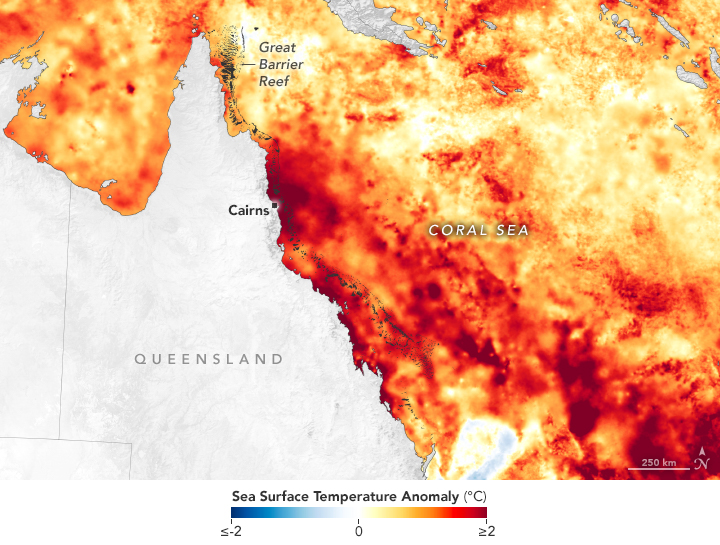 Map showing sea surface temperatures in March, 2022 near the Great Barrier Reef in Australia. The darker red colors indicate an in increase in sea surface temperature.
Map showing sea surface temperatures in March, 2022 near the Great Barrier Reef in Australia. The darker red colors indicate an in increase in sea surface temperature.
Coral bleaching is caused by increasing ocean temperatures. As water temperatures rise, it causes corals to expel their zooxanthellae, leaving behind a bone-white shell and depriving the coral of its main food source. “Eventually what happens is that the coral is too weak to compete with other organisms, like filamentous algae, that can overgrow the coral and eventually kill the whole colony,” said Torres-Pérez.
Other threats to coral reefs come from human activity, such as pollution or physical damage. “Increases in sedimentation from poor land management get deposited into the reefs,” said Torres-Pérez, citing urban stormwater runoff and deforestation as two examples of sedimentation. Coral sedimentation is the deposition and accumulation of sediments, like fine sands or mud, on a reef. This clouds the waters, blocking critical sunlight and reducing the ability of zooxanthellae to photosynthesize.
Another human-caused threat to corals is eutrophication, the unnatural increase of nutrients in the water. “Eutrophication provides grounds for the development of filamentous algae, which grows much faster than corals,” said Torres-Pérez. Some of these excess nutrients in the water come from sewage released into coastal waters or runoff of agricultural fertilizers into the ocean. The algae feed off the excess nutrients and grow into massive blooms, which suppress the growth of corals.
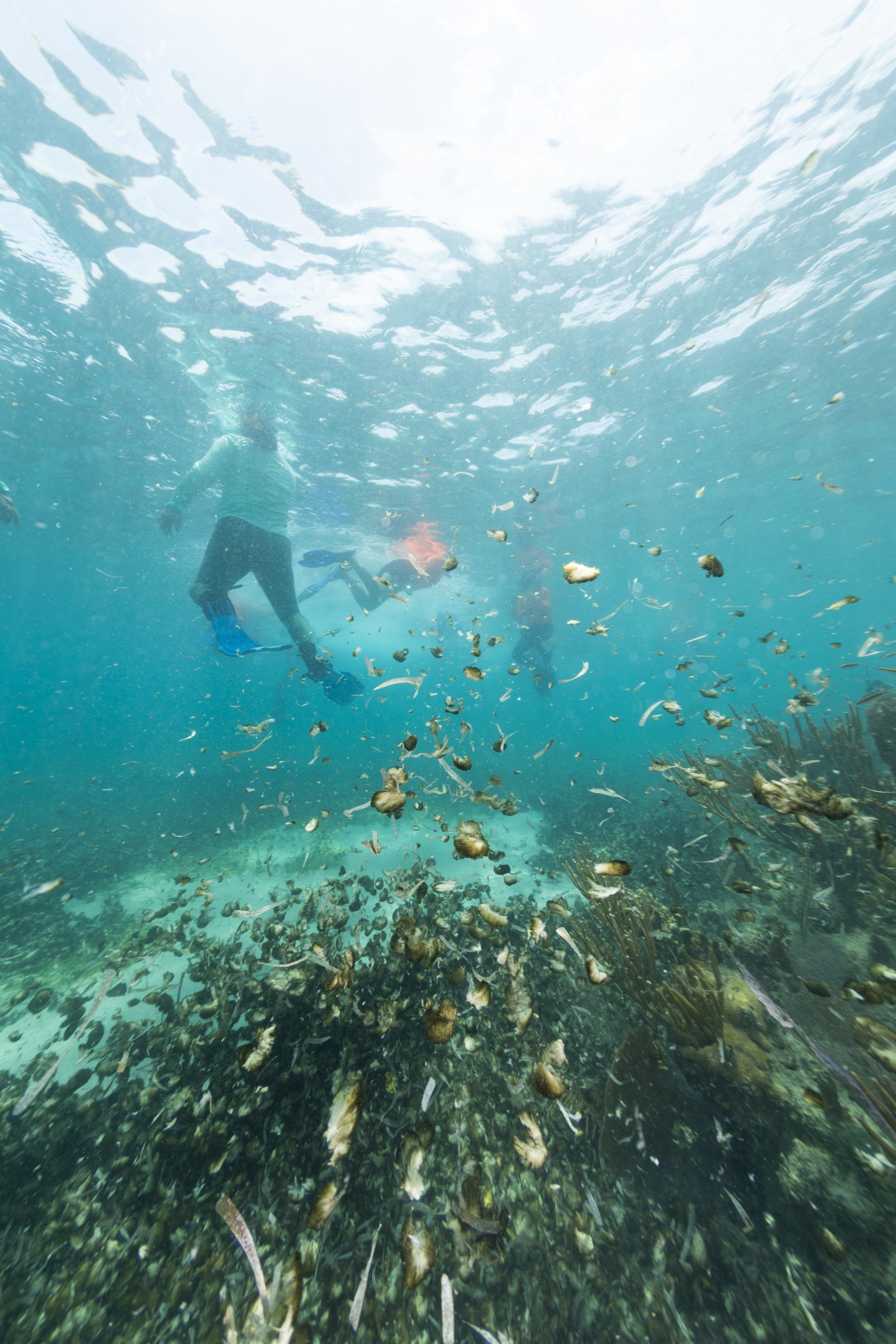 Cyanobacteria overgrowth crowds the water of Playa Melones, Puerto Rico, likely caused by an on-land source of pollution leeching excess nutrients into the water. In the background float students and instructors from the NASA OCEANOS internship.NASA Ames/Milan Loiacono
Cyanobacteria overgrowth crowds the water of Playa Melones, Puerto Rico, likely caused by an on-land source of pollution leeching excess nutrients into the water. In the background float students and instructors from the NASA OCEANOS internship.NASA Ames/Milan Loiacono
Moreover, Torres-Pérez pointed out that human-caused physical damage to reefs can result from mechanical damage, such as ship anchors being thrown onto corals. Some fishing techniques, like deep water trawling (dragging fishing nets along the sea floor), can also damage reefs by pulling and tearing corals away from their bases. On a more individual scale, coral damage can also result from being stepped on by humans, or accumulated trash left behind by beach-goers.
What is being done to protect coral, at NASA and beyond?
Many coral reefs in the world are still unclassified, unexplored, or yet to be discovered. NASA’s NeMO-Net hopes to change that. Torres-Pérez, who is a Co-Investigator for NeMO-Net, described how the citizen science project functions like an interactive mobile video game, allowing anyone to identify corals. “Users can characterize different components of a coral reef based on 2D [and 3D] images of a coral reef,” said Torres-Pérez. “which goes into a machine learning component.” The information from these classifications is fed into a scientific model and helps NASA both classify and assess the health of coral reefs around the world. To learn more about NeMO-Net and how to get involved, check out their website.
In 2022, Torres-Pérez founded OCEANOS (Ocean Community Engagement and Awareness using NASA Earth Observations and Science for Hispanic/Latino Students), a program aimed at bringing oceanography and STEM opportunities to the next generation of Hispanic/Latino students in Puerto Rico. During the program, students build and test their own low-cost optical sensors, test data in a phytoplankton lab, replant coral reefs, and create storymap presentations of their work. “We want students to feel confident and capable to pursue STEM careers,” Torres-Pérez said, “and we want them to become agents of change in their community to share the importance of preserving the ocean.”
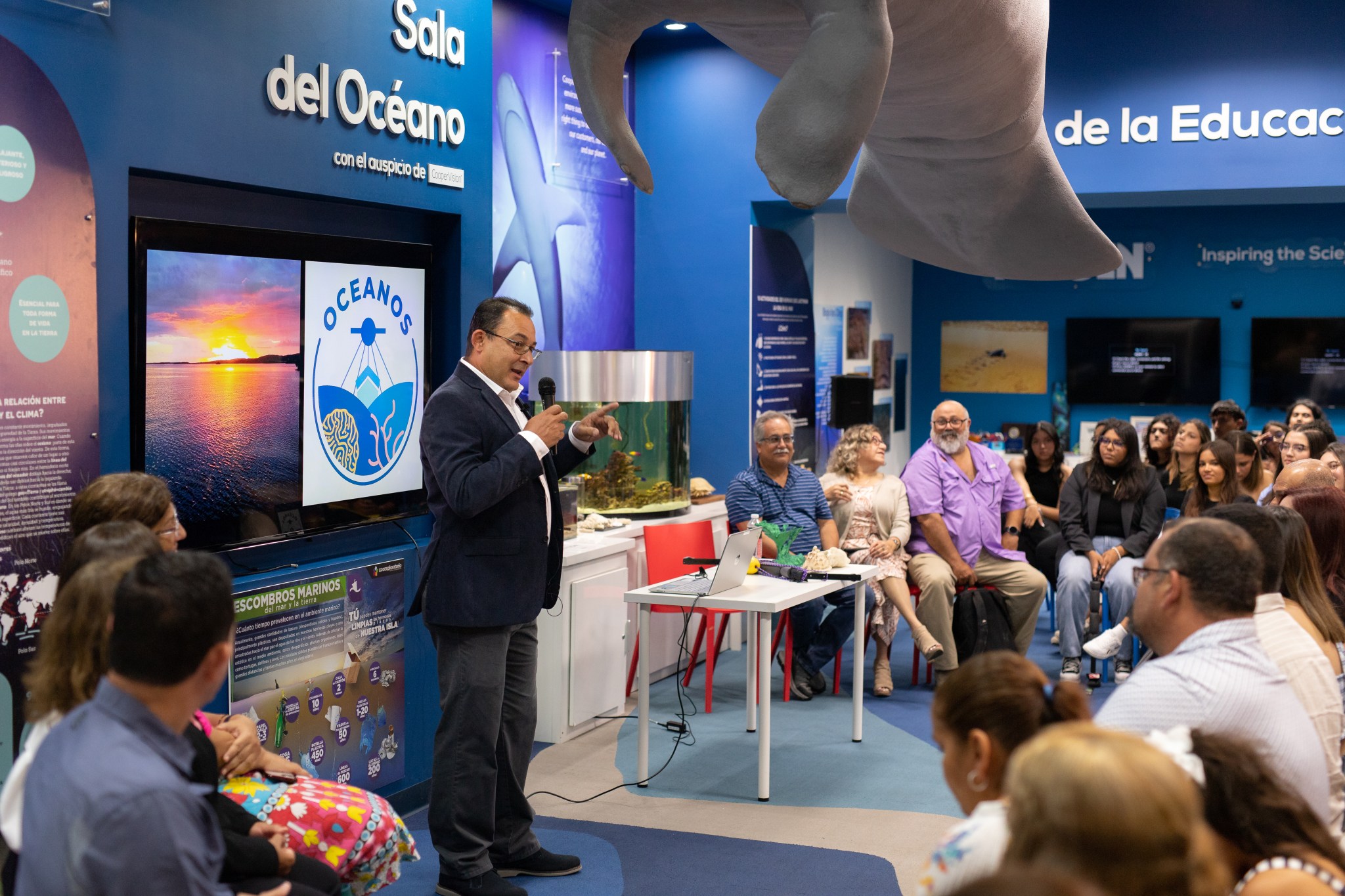 OCEANOS PI Juan Torres-Pérez delivers the opening address of the 2023 final presentations to a crowded room at the EcoExploratorio: el Museo de Ciencias de Puerto Rico.NASA Ames/Milan Loiacono
OCEANOS PI Juan Torres-Pérez delivers the opening address of the 2023 final presentations to a crowded room at the EcoExploratorio: el Museo de Ciencias de Puerto Rico.NASA Ames/Milan Loiacono
Outside of NASA, Torres-Pérez is an active member of the U.S. Coral Reef Task Force (USCRTF); an interagency body established in 1998 from Executive Order 13089: Coral Reef Protection that aims to preserve, protect, and restore coral reef ecosystems.
Resources to Learn More To learn more about coral reefs and how they are monitored, Torres-Pérez recommends checking out resources from the National Oceanic and Atmospheric Administration (NOAA), which has a section on their website dedicated to corals. One notable coral reef resource from NOAA is their Coral Reef Watch website, which monitors sea surface temperatures on global and local scales. The website serves government and non-governmental agencies with their data products, which are used to monitor and predict climate impacts on coral reefs worldwide.
Written by: Katera Lee, NASA Ames Research Center
Keep Exploring Discover More Topics From NASA Missions


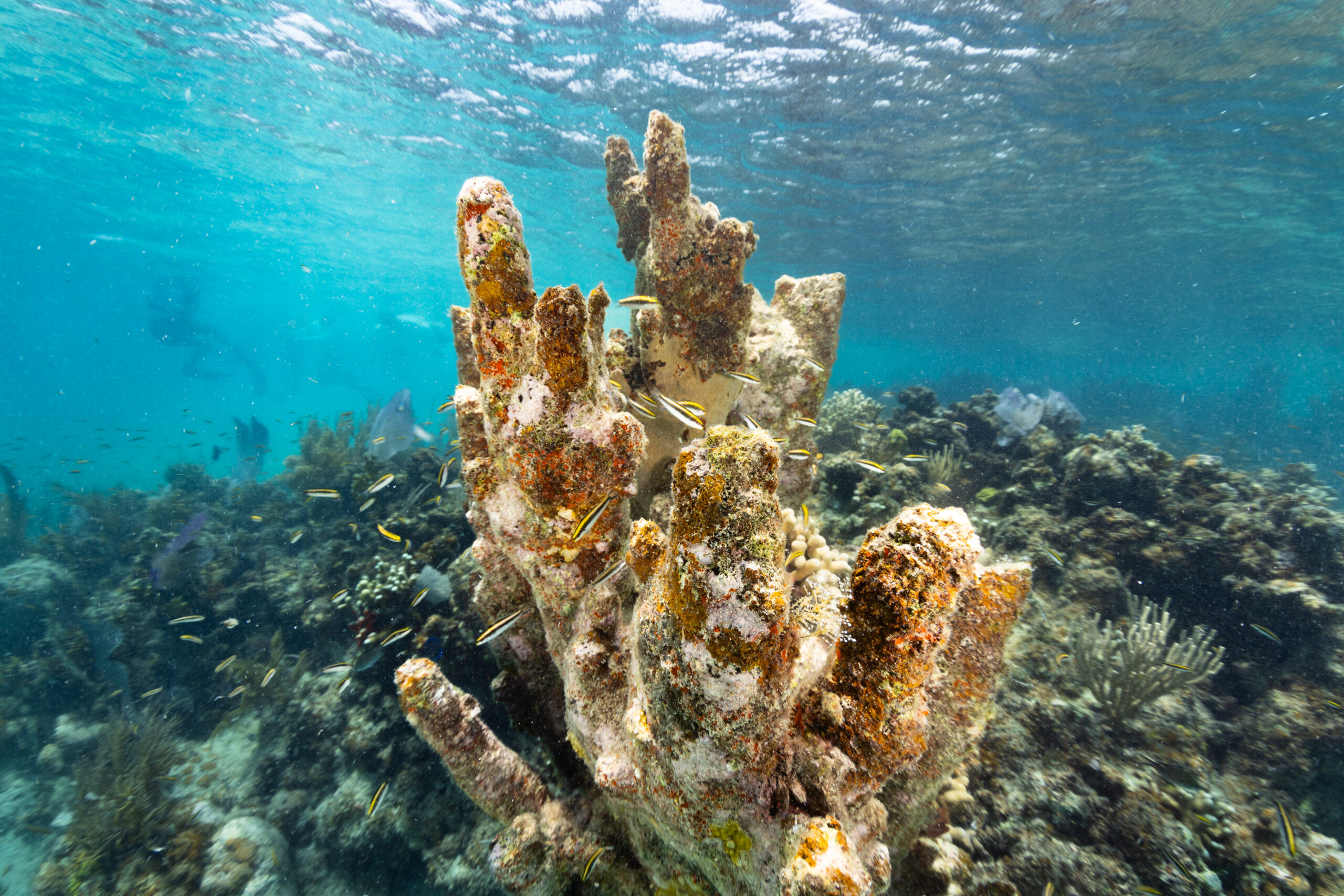
 2 min read $1.5 Million Awarded at Watts on the Moon Finals Article 10 hours ago
2 min read $1.5 Million Awarded at Watts on the Moon Finals Article 10 hours ago  1 min read NASA Glenn Connects with Morehead State University Article 10 hours ago
1 min read NASA Glenn Connects with Morehead State University Article 10 hours ago 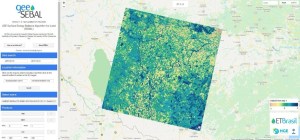 15 min read OpenET: Balancing Water Supply and Demand in the West Article 1 day ago
15 min read OpenET: Balancing Water Supply and Demand in the West Article 1 day ago 


